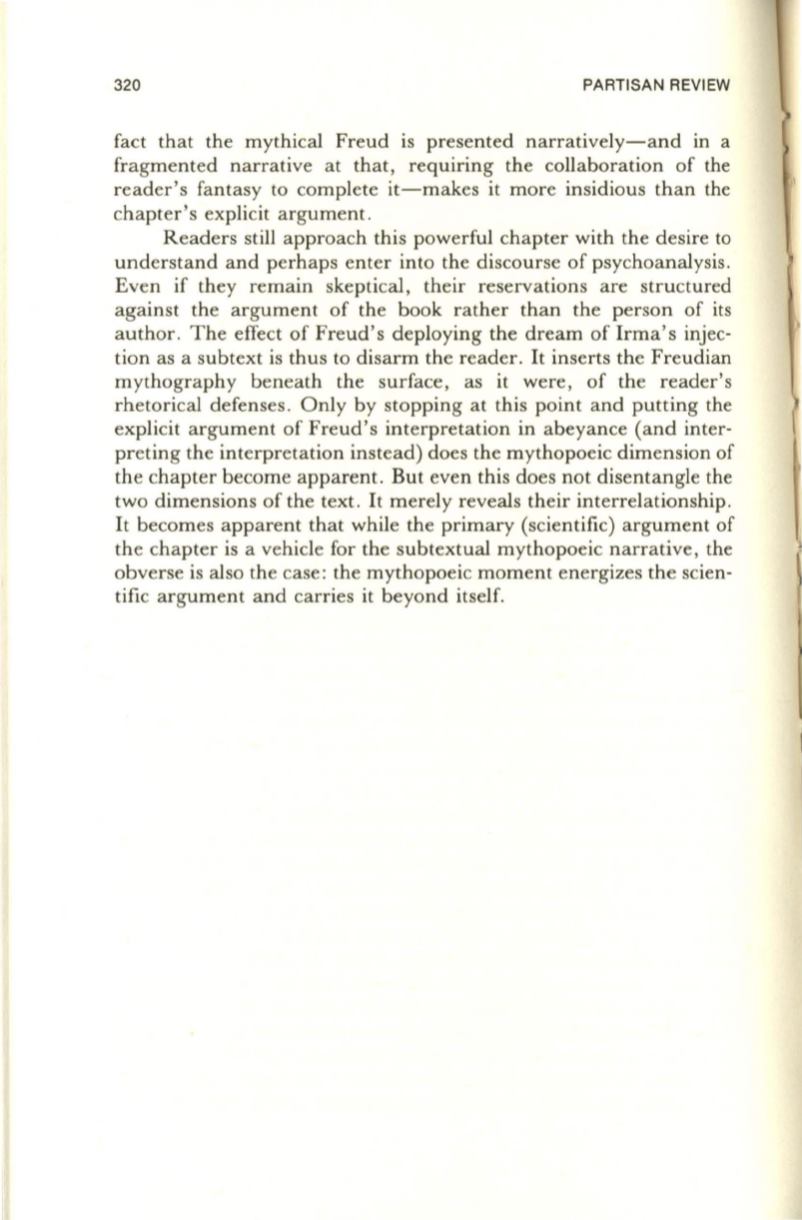
320
PARTISAN REVIEW
fact that the mythical Freud is presented narratively-and in a
fragmented narrative at that , requiring the collaboration of the
reader ' s fantasy to complete it-makes it more insidious than the
chapter's explicit argument .
Readers still approach this powerful chapter with the desire to
understand and perhaps enter into the discourse of psychoanalysis .
Even if they remain skeptical , their reservations are structured
against the argument of the book rather than the person of its
author. The effect of Freud's deploying the dream of Irma's injec–
tion as a subtext is thus to disarm the reader. It inserts the Freudian
mythography beneath the surface, as it were , of the reader's
rhetorical defenses. Only by stopping at this point and putting the
explicit argument of Freud's interpretation in abeyance (and inter–
preting the interpretation instead) does the mythopoeic dimension of
the chapter become apparent . But even this does not disentangle the
two dimensions of the text. It merely reveals their interrelationship.
It becomes apparent that while the primary (scientific) argument of
the chapter is a vehicle for the subtextual mythopoeic narrative , the
obverse is also the case: the mythopoeic moment energizes the scien–
tific argument and carries it beyond itself.


